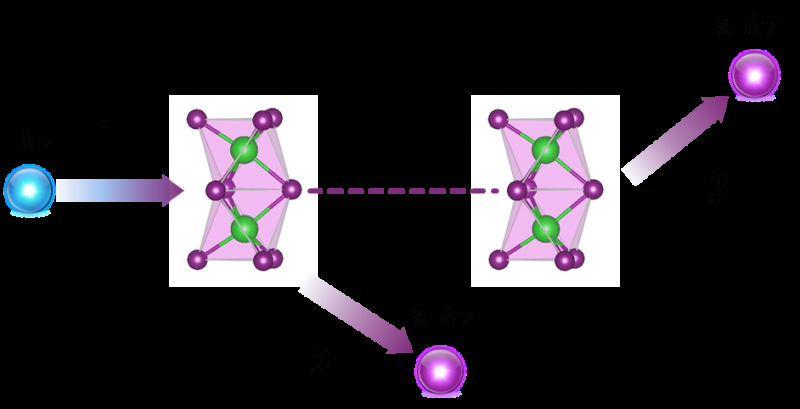Molecular nanoparticles lead to major advancement in the development of solar cells

A new study by researchers at the University of St Andrews could herald a major advancement in the development of solar cells.
The efficient use of solar energy for electricity generation is considered vital to reducing carbon dioxide emissions, a cause of global warming.
The St Andrews research, led by Professor John Irvine, has demonstrated that the atomically precise nanoparticles known as nanoclusters or molecular nanoparticles are capable of cutting a high-energy photon into two lower-energy ones, which could benefit the development of the third-generation photovoltaics, the direct conversion of light into electricity at the atomic level.
The findings are published today (1 August 2017) in the scientific journal Nature Communications.
The efficiency of an ideal single junction solar cell is limited to 30 per cent to balance the light absorption and the energy of the excited electro-hole pairs. The cutting of a high-energy photon into two photons of nearly half energy could offer the prospect of exceeding the efficiency limit as it will increase the number of charge carriers and efficient use of high-energy light rays in the solar spectrum.
The generation of two low-energy photons from a high-energy one has been observed in quantum dots and lanthanide ions due to the confinement of excitons and the transport of charge carriers from neighbouring ones.
Now the St Andrews-led team has demonstrated the nanoclusters in organic-inorganic hybrid bismuth halide can also be used for the splitting of a high-energy photon with the nanoclusters and this could bring advances in solar cells as they are arranged in a bulk crystalline material that can be processed from solution.
Professor Irvine said: "It is expected that this study would stimulate the study on materials with nanoclusters or low-dimensional organic-inorganic hybrid materials for photonic devices and this atomic precise subunit in crystalline materials could ease the preparation and processing of nano-sized particles as they are controlled by the intrinsic crystal structure of the material."
More information: Charge carrier localised in zero-dimensional (CH3NH3)3Bi2I9 clusters. Nature Communications. DOI: 10.1038/s41467-017-00261-9
Journal information: Nature Communications
Provided by University of St Andrews



















